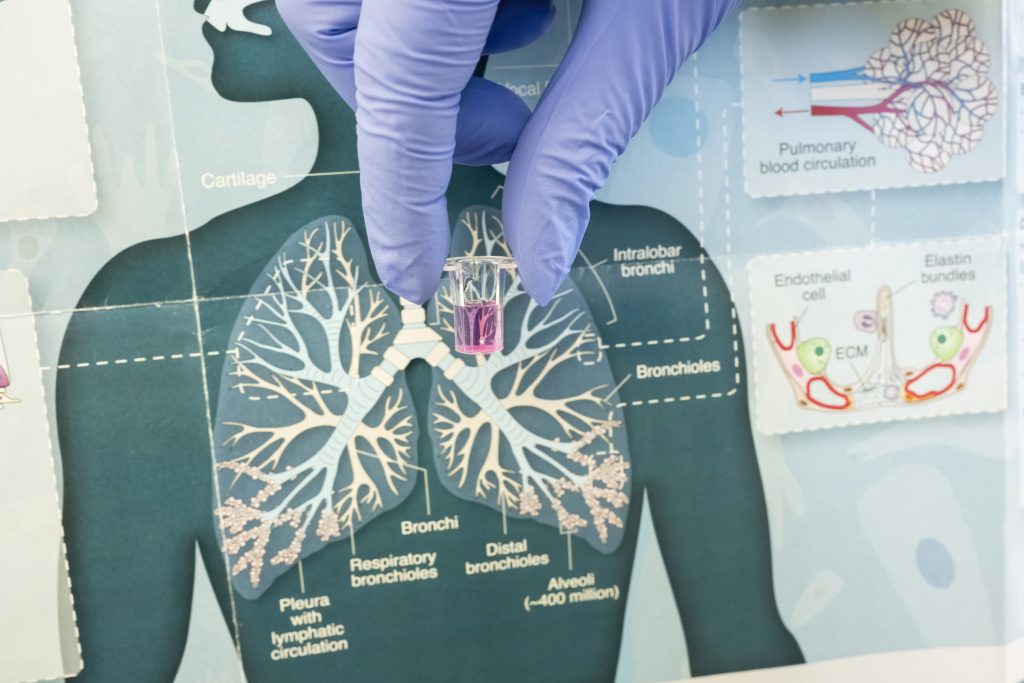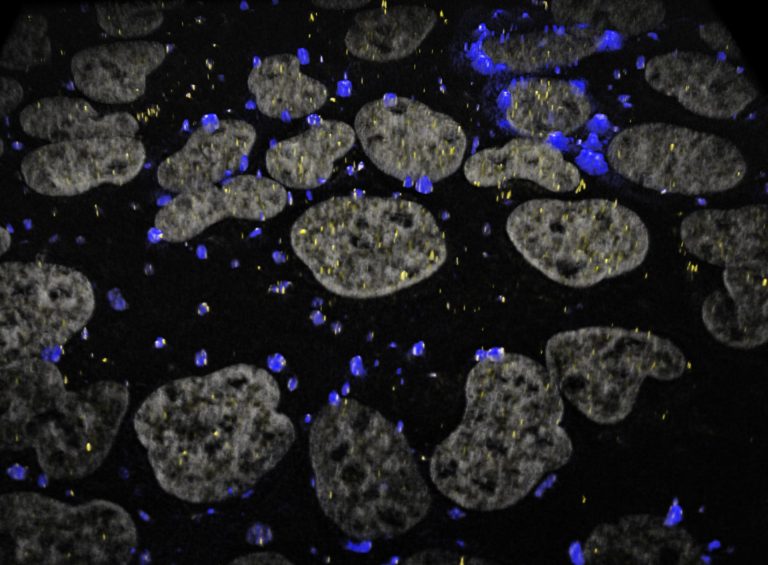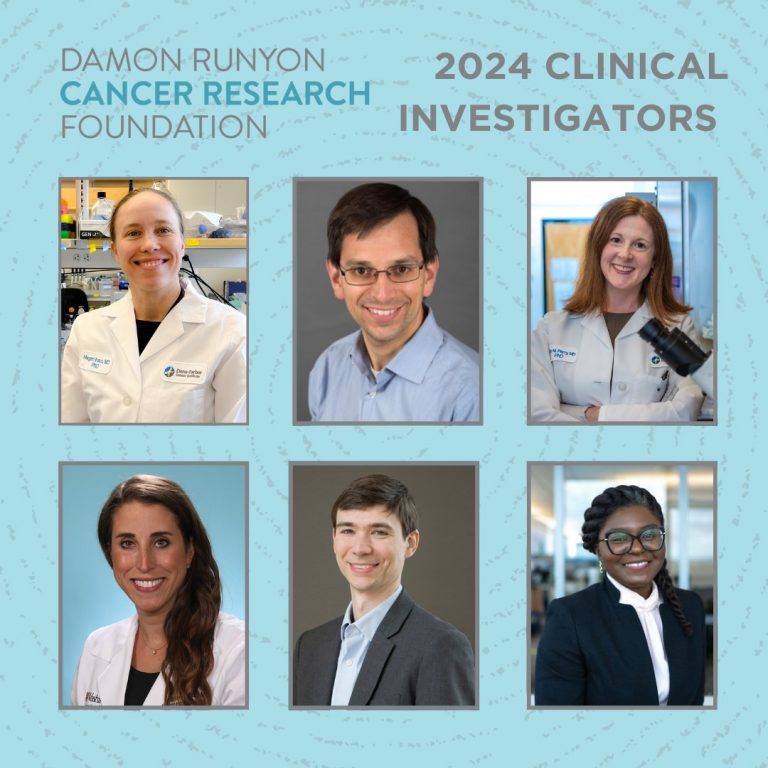U-M Researchers Collaborate on $3 Million Grant to Treat Rare Forms of Cystic Fibrosis
Center RNA Therapeutics Director Michelle Hastings, and faculty members Rachel Niederer and Alexandra Piotrowski-Daspit address the need for new treatment strategies, and the subsequent barriers that must be overcome for success, by working together as an interdisciplinary team with unique expertise in CFTR physiology, designing RNA therapeutics, identifying targetable regulatory sequences, and developing engineered delivery vehicles for therapeutic molecules.
Written by Paul Avedisian and Michele Santillan
Three U-M researchers and collaborators have received a $3 million Collaborative Research Grant from the Cystic Fibrosis Foundation to develop RNA therapeutics to combat cystic fibrosis. Michelle Hastings, Ph.D., Pfizer Upjohn Research Professor of Pharmacology, will head the interdisciplinary initiative as lead Principal Investigator (PI) on the project, with Rachel Niederer, Ph.D., Assistant Professor of Biological Chemistry, and Alexandra Piotrowski-Daspit, Ph.D., Assistant Professor of Biomedical Engineering and Internal Medicine – Pulmonary and Critical Care Medicine Division, each serving as PIs of their component projects.
Cystic fibrosis (CF) is caused by deleterious changes in the cystic fibrosis transmembrane conductance regulator (CFTR) gene which encodes a chloride ion channel. The CFTR protein helps maintain the balance of salt and water in many tissues within the body, such as the lungs and gastrointestinal tract. People with CF have a multi-system disease with respiratory symptoms, including difficulty clearing mucus from their lungs and associated infection, as well as gastrointestinal (GI) issues and CF-associated diabetes.
Joined by Wren Michaels, Ph.D., Assistant Director, Compound Screening and Drug Discovery Core, Research Assistant Professor, Chicago Medical School Center for Genetic Diseases, Rosalind Franklin University of Medicine & Science, the team brings together expertise in RNA therapeutic discovery and nanomedicine delivery technology to address the urgent unmet need for treatments for people with cystic fibrosis who have rare CFTR gene variants and are either ineligible for, or do not respond to, currently available therapies for the disease.
Dr. Hastings explains, “More than 90 percent of those with CF are eligible for traditional treatments, but many with rare forms of CF are not, leading to severe illness and morbidity. For this group of people, there are no good treatment options that address the cause of the disease at its roots.”
Enter Michigan RNA Therapeutics. As Director, Dr. Hastings aims to harness the collective U-M cross-campus RNA research community in projects like these, and design and deliver effective, safe, and viable treatments for currently untreatable diseases and conditions such as rare CF-associated genetic variants. “The promise that RNA therapeutics hold over conventional treatment is that they can be designed for each individual’s specific needs, quickly, and safely,” Dr. Hastings says, “which is exactly what makes this project so ideally suited.”
The U-M team is addressing this need for new treatment strategies, and the subsequent barriers that must be overcome for success, by working together as an interdisciplinary team with unique expertise in CFTR physiology, designing RNA therapeutics, identifying targetable regulatory sequences, and developing engineered delivery vehicles for therapeutic molecules. Dr. Piotrowski-Daspit notes: “This is the dream team and environment for genetic therapies for CF, a major focus of the “Path to a Cure” initiative of the Cystic Fibrosis Foundation. U-M is well positioned to be a leader in this field.” She also adds that “as an early career scientist, the ability to work on this impactful team science project is an incredible opportunity.”
Dr. Michaels, Dr. Niederer, and Dr. Piotrowski-Daspit are all new faculty members starting their independent careers, highlighting the significance of this project on their emerging research programs. “It’s really a testament both to the people and environment at U-M that we were able to find each other so quickly and figure out how to best combine our expertise in a meaningful way,” Dr. Niederer adds.
The overarching goal of this collaborative program is to discover and develop RNA therapeutics for CF through three distinct program projects. The team is designing therapeutic strategies and molecules, identifying new therapeutic targets and discovering new intervention points as well as delivering therapeutic molecules to tissues relevant to CF.
The lead PIs on these projects have expertise in each of these areas and together can advance past the barriers that stand in the way of CF drug advancement. Dr. Niederer’s research focuses on identifying the regulatory features involved in the translation process of mRNA, finding out how cellular machinery reads mRNA, and how that program is executed. She also studies the largely unexplored area of genetic sequences that are in noncoding regions of the genome, but can be manipulated to control the expression of genes. “We’re interested in a number of pieces of that process, including identifying all the components and features, and figuring out how they work,” she said. “One of the obstacles to developing new therapeutics is the time it takes to screen potential targets. With our technology, we think we can really speed this up and I’m excited to see how far we can take things with this outstanding team.”

Building on Dr. Niederer’s foundational science, Dr. Hastings will design a type of RNA therapeutic molecule called an antisense oligonucleotide (ASO), that will work to correct the mutated gene at its source by altering its expression. “ASOs, and also mRNAs, have emerged as effective therapeutic options to fight disease,” Dr. Hastings reports. “Strategies using these tools are being explored as potential CF treatments, and they have shown promise in CF model systems.”
Dr. Hastings will provide BME’s Dr. Piotrowski-Daspit with these potential therapeutics, which her team would encapsulate in nanoparticles designed for intravenous delivery or local delivery to the airways. Dr. Piotrowski-Daspit focuses on engineering polymeric nanoparticles for nucleic acid delivery. In her research, she seeks to develop biodegradable and biocompatible materials that would be ideal delivery vehicles for RNA or other nucleic acid therapeutics in order to protect and transport them to tissues of interest in the body.
The challenge then becomes finding ways to evade barriers in the body to these foreign nanoparticles. “If you deliver drugs intravenously, there are various systemic clearance mechanisms that you have to overcome and you want to be able to deliver to the right organs, tissues, and cell types,” said Dr. Piotrowski-Daspit. “For example, in the airways, the epithelial and basal cells are major target cell-types. Similarly, we need to think about also reaching the gastrointestinal epithelial cells. We have to think about this from a multi-organ disease perspective.”
“In close collaboration with other researchers, clinical scientists, and physicians at the Cystic Fibrosis Centers at Michigan, we hope to one day have therapies for people with the disease who currently have no disease-slowing treatment options,” Dr. Hastings said.
The CF Collaborate Grant project will culminate with test studies on tissues and associated animal models. “With this team, we have all the pieces in place to take this through to clinical trials at Michigan,” Dr. Hastings relays. “We can make the journey from sequencing a patient’s genome, to designing an RNA-based medicine, to delivering that drug to a target inside the body – a true pipeline from bedside to bench and back to bedside. That’s the next step. That’s the dream.”



